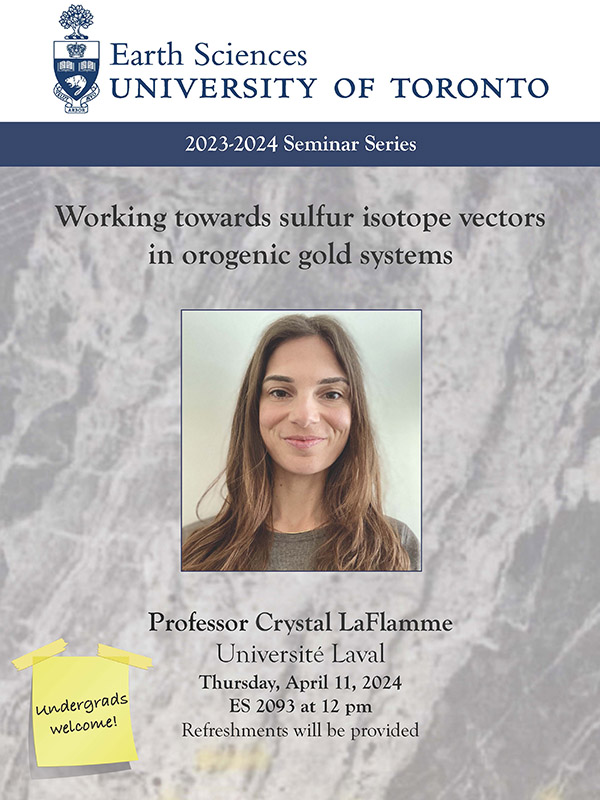Seminar Series: Working Towards Sulfur Isotope Vectors in Orogenic Gold Systems
When and Where
Speakers
Description
The final departmental seminar of the academic year - please come at noon to enjoy some coffee and snacks with your colleagues.
Abstract: During orogenic gold mineralization, the mechanism by which a hydrothermal fluid precipitates gold in sulfide-bearing quartz-carbonate shear veins remains elusive. However, due to their small geochemical footprint, understanding the specific mechanism responsible for gold precipitation is critical for targeting concealed high-grade veins, especially as exploration moves undercover. Reduced, near-neutral fluids, characteristic of orogenic gold, commonly ascend along deep structural corridors located in the middle crust (~7-15 km), and transport gold as Au(HS)2-. As a result, the precipitation of gold from hydrothermal fluids is best interpreted as the product of the evolving fluid SO42-/H2S ratio (fO2) and/or H2S concentration (fS2), each a function of multiple competing processes that destabilize the Au(HS)2- complex, such as fluid mixing, fluid-wall rock reaction, and/or phase separation. Recent developments in analytical techniques, including the measurements of sulfur isotopes by LA-ICP-TQ-MS in our lab, allow for δ34S to be measured through a sulfide-paragenetic sequence, deciphering evolving fluid physico-chemistry that lead to the destabilization of reduced Au-complexes.
In this talk, I will demonstrate new applications of in-situ multiple sulfur isotopes (δ34S-Δ33S) combined with trace element composition through gold-bearing sulfide parageneses, with examples from orogenic gold deposits hosted in the Neoarchean greenstone belts of the Abitibi subprovince, Canada, and Eastern Goldfields, Australia. By understanding differences controlling gold precipitation mechanisms, we can better explore in the near-mine space. For instance, at the Kanowna Belle deposit, multiple sulfur isotopes and trace element composition of sulfides indicates that fault structures not only act as conduits for auriferous fluids, but also as drivers for gold precipitation, regardless of the host-rock chemical composition. This understanding opens up the search space to the upper Fe-poor lithologies of the host greenstone sequence. I will show in our most recent work, how we are working to develop sulfur isotope vectors to high-grade mineralisation in the Meliadine gold district, Nunavut.



